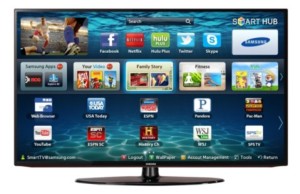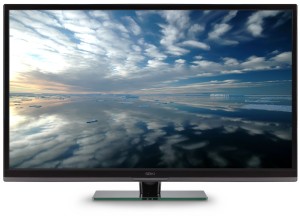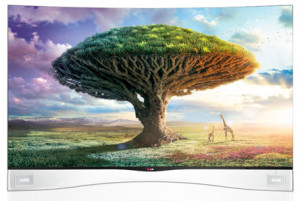If you’re looking for a new flat screen TV for your home then I’m sure you’ve been bombarded by almost countless options available to buyers today. Even if you’re out to buy with very specific criteria (price, TV size, energy efficiency, etc.) in mind they do not really make it an easier decision for you. One of the things that you will need to figure out are the names. You’ll need to sort through the nomenclature that will create a bit of confusion. I mean, do you know the difference between LCD TVs, LED TVs and the newer OLED TVs? If the answer is no then please keep reading.
Old and new LCD TV backlighting

The liquid crystal display (LCD) is a type of display technology that usually requires some sort of illumination to create images. The pixels in an LCD display can produce the color required to produce images but they can not be seen if they do not get illuminated by a separate light source. The older generation of LCD TVs were lit by fluorescent lamps. These lamps were referred to as cold cathode fluorescent lights (CCFL) that are usually installed behind the LCD screen panel to provide the backlighting required to complete the picture being shown. That’s basically the key to understanding the difference between LCD TVs and those referred to as LED TVs. Some manufacturers have misleadingly promoted LED TVs as a new television technology that’s supposed to replace the older LCD TV but the former isn’t really a new technology as it only uses a different form of back lighting, namely light emitting diodes (LEDs), instead of the conventional CCFLs.

This of course was prompted by our ever continuing quest to shrink everything as LEDs, with their small sizes, have enabled TV engineers to reduce thickness and weight of LCD TVs which they named LED LCD TVs or LED TVs for short. The LEDs are usually placed behind the LCD panels in an array configuration or they could be lined up around the panel edges which brought about the “Edge Lighting” classification of LED flat screens. Edge lighting are usually thinner and lighter compared to full array types but the latter are usually preferred if you are after better picture quality. Having the LEDs in an array enable TVs to independently control light output of the LEDs in different areas of the screen. Referred to as the “local-dimming” ability, this gives these types of flat screens improved contrast which makes for better picture quality compared to other types like the edge-lit varieties.
Read: Cheap 4K (Ultra-HD) flat screens priced under $1,000!
One limitation of these types of TVs is that they need to be lit to do their work as televisions. This is in contrast to the erstwhile king of the living rooms, the cathod-ray tube (CRT) TVs of the yester-years, which do not require separate forms of lighting because they produce pictures by creating their own light. The plasma flat screen does the same thing which is the reason why it produces better imagery compared to the older generations of the LCD TV. Plasma screens produces the deepest blacks because it simply stops producing light to do so. Older LCDs create grays at best because they can’t just turn off the backlighting which results to poorer contrast relative to plasma.
OLED TVs: Truly a new flat screen TV technology
OLED, which stands for organic light emitting diode, has been around for a longer time than most people know as we have been using this technology in other fields other than TV dipslays. Cell phone makers, for instance, have been using them for many years in their phones before it was used for TV displays. Now, OLED TVs are considered a truly new type of TV technology because it no longer uses LCD. Instead they use LEDs at the pixel level which means it produces its own illumination which then more akin to CRTs and plasmas and very different from LCDs. OLEDs probably deserve the name LED TVs more than the current crop of “LED TVs” do because they really use, well, LEDs!

And because OLED flat screens do not require any form of back-illumination to produce pictures, they tend to be thinner and lighter than any of their thinnest and lightest LCD counterparts. They also produce more superb images with better contrast and color rendition which should make them great centerpieces in homes. Another new thing that you will see with OLEDs are that some are designed to have curved screens which they say improves the watching experience. The only problem at this point of its life cycle is that they are extremely expensive with current models priced north of $5,000 so they aren’t for everyone yet.
Related: Go future-ready with the Ultra-HD 4K TV
The LCD or LED or OLED TV question
If you’re looking to buy a new flat screen TV then the decision on which one to buy all boils down to your preferences and budget. Each buyer will balance these two factors differently but if money isn’t an issue, I guess there’s really no excuse not to go for the top-of-the-line OLED unit. Samsung and LG are fighting head-to-head in this arena so you should look at their current offerings. On the other hand, if money is a big issue the way it is for rest of us then striking a balance between preference and budget should be the way to go. The great news is that it shouldn’t be hard to find a good unit at any price level out there today. Innovation is helping give us better and better buying options which is always good if you understand what you are looking for. We’re hoping this article helps clear out some of the misconceptions so you could arrive at a better decision in your decision to buy a new flat screen TV.
Leave a Reply